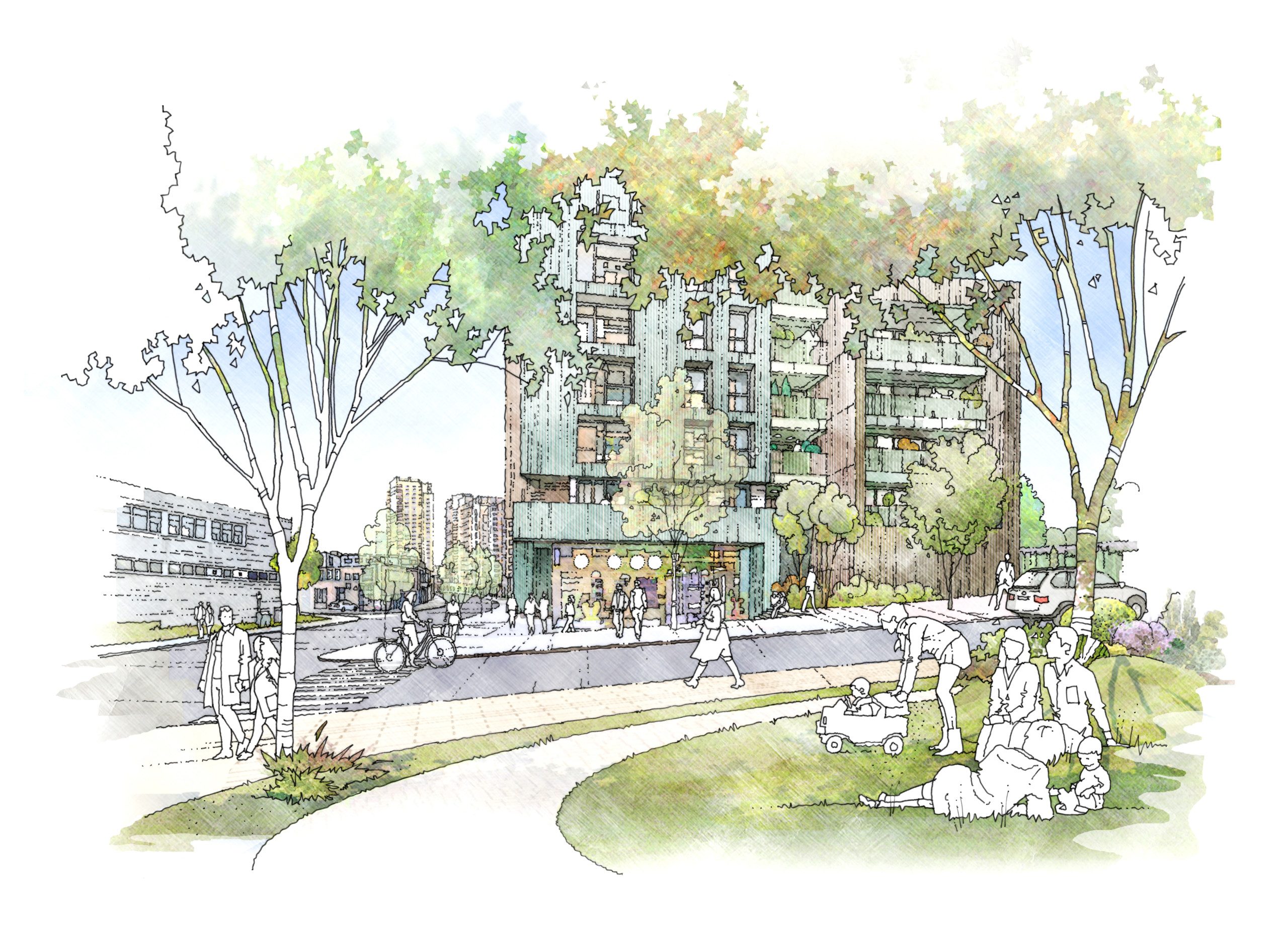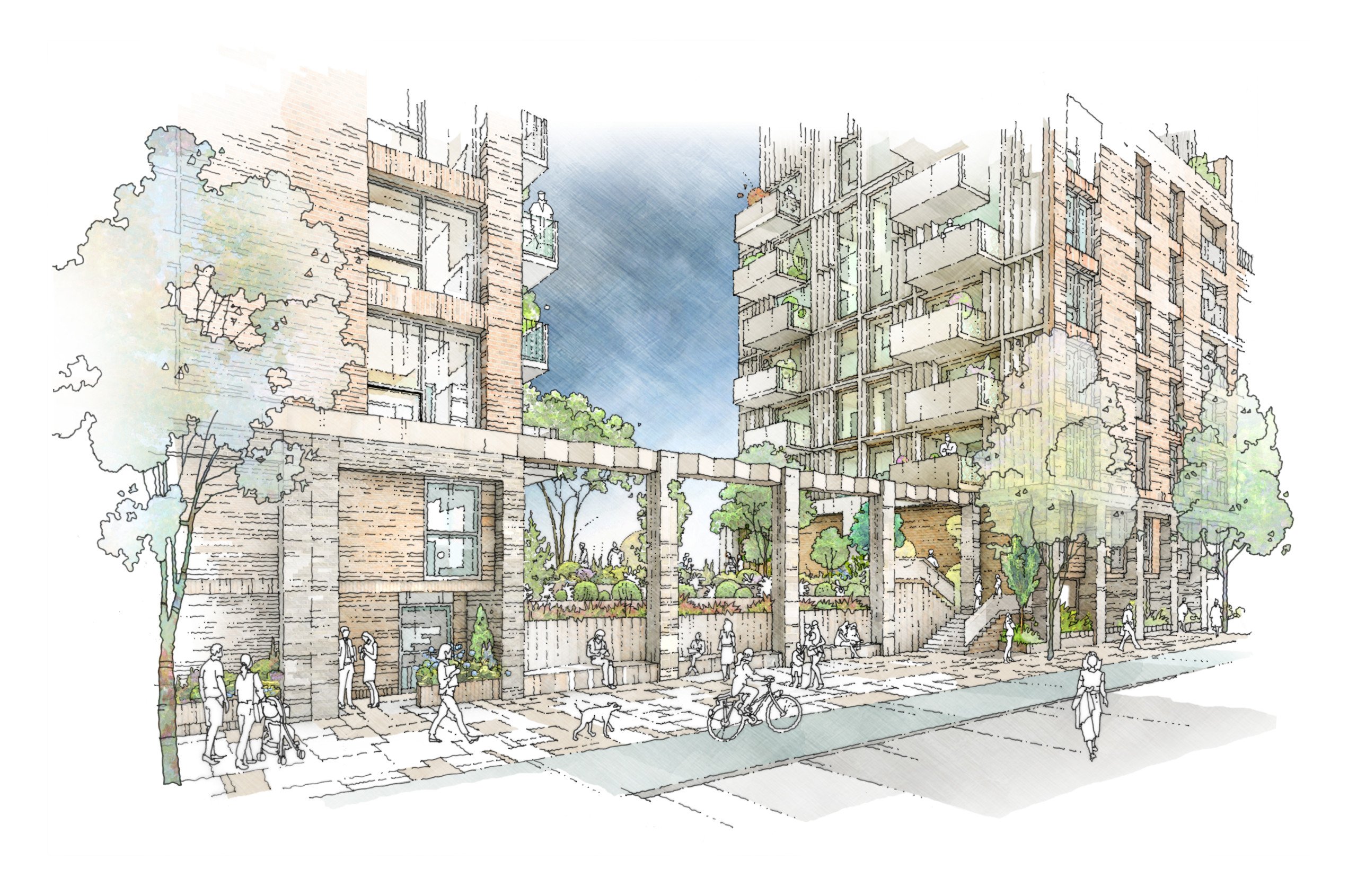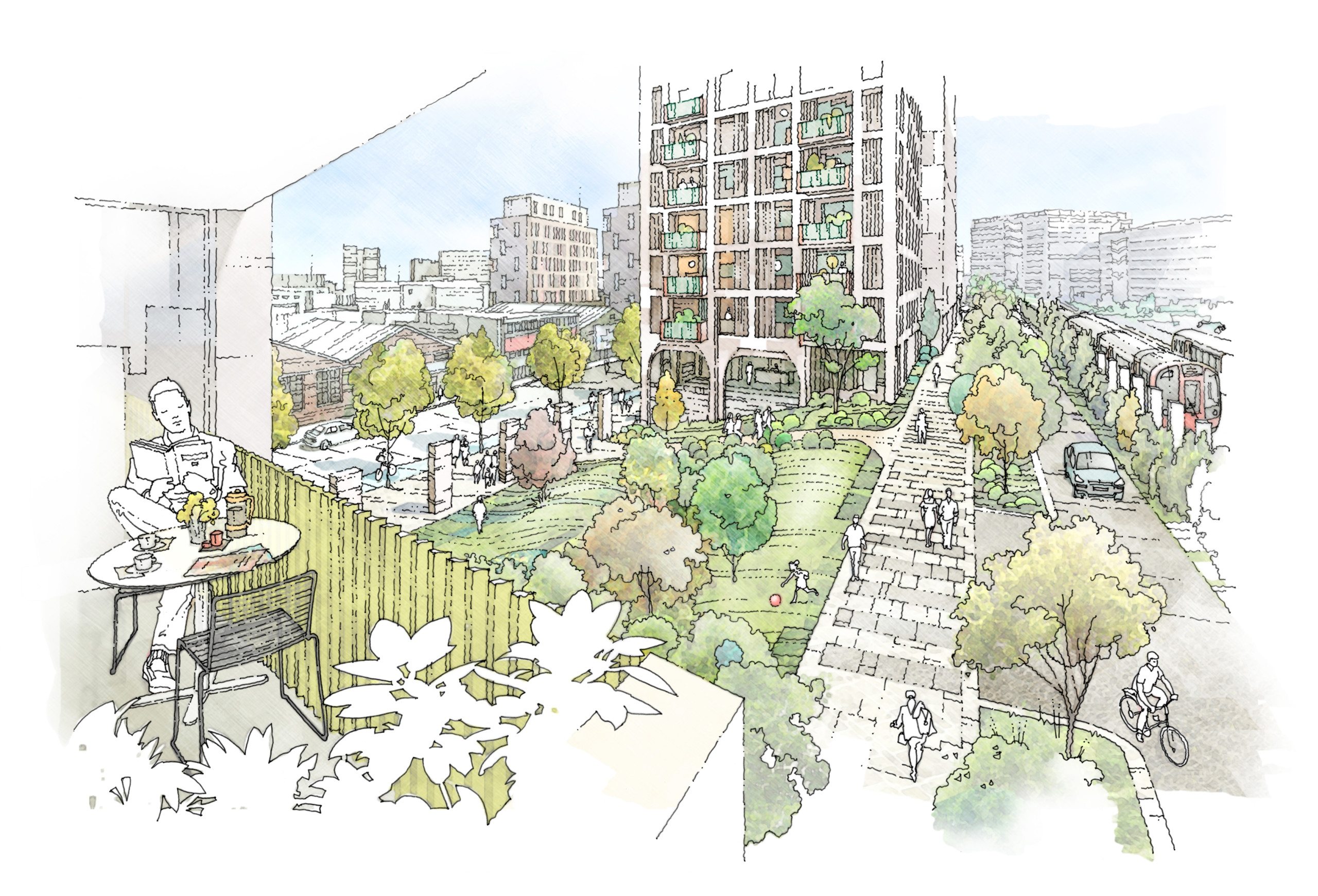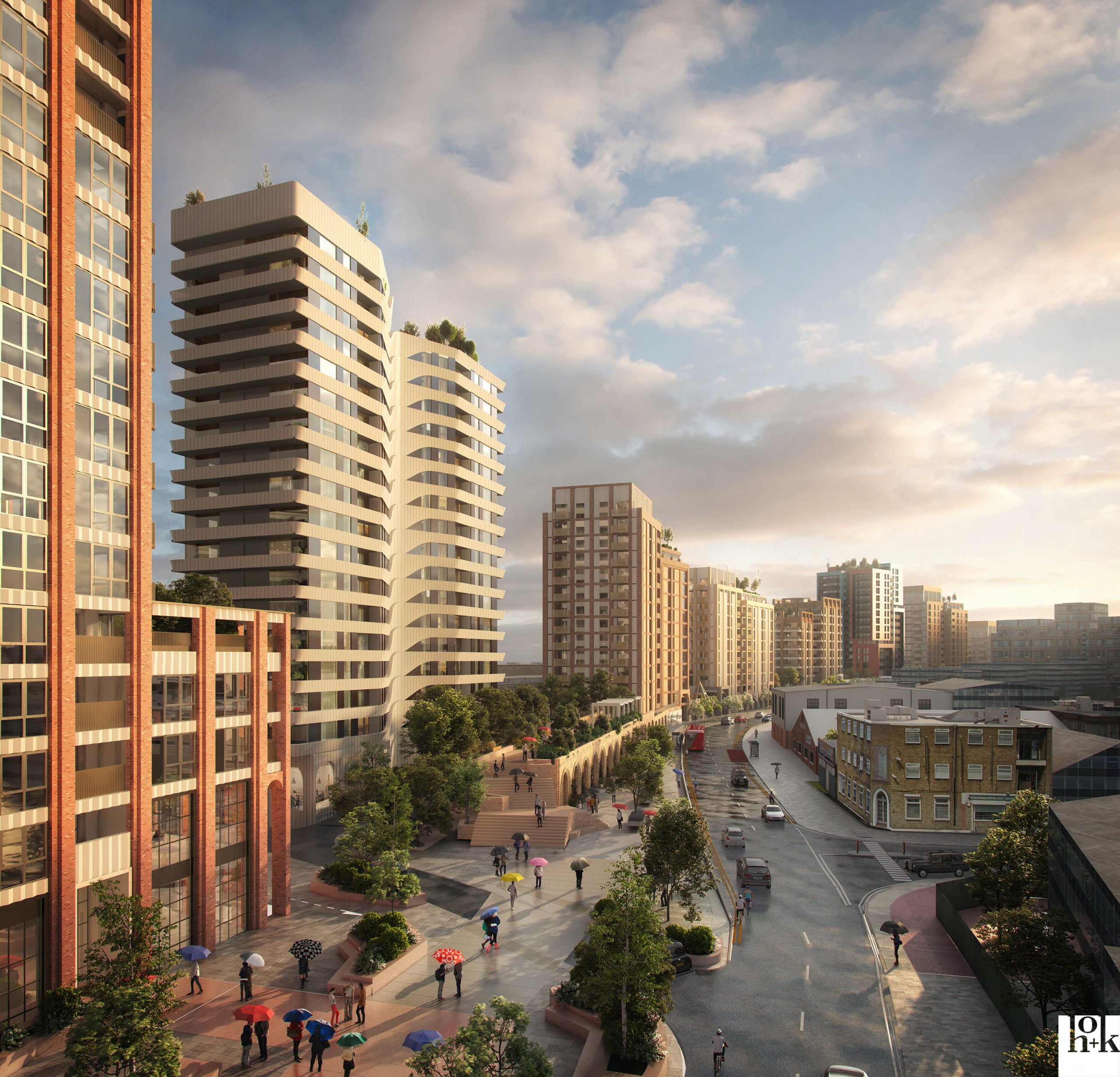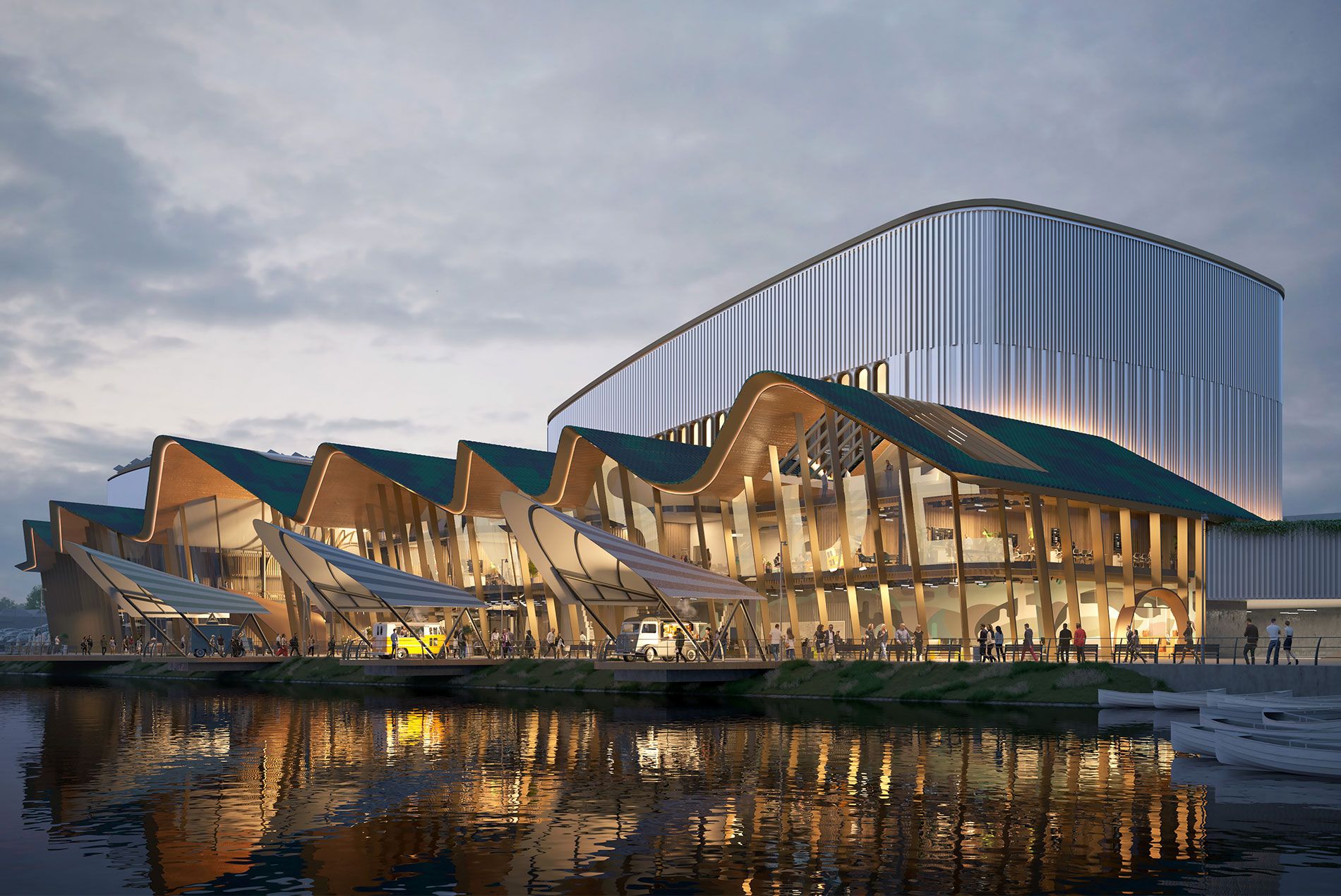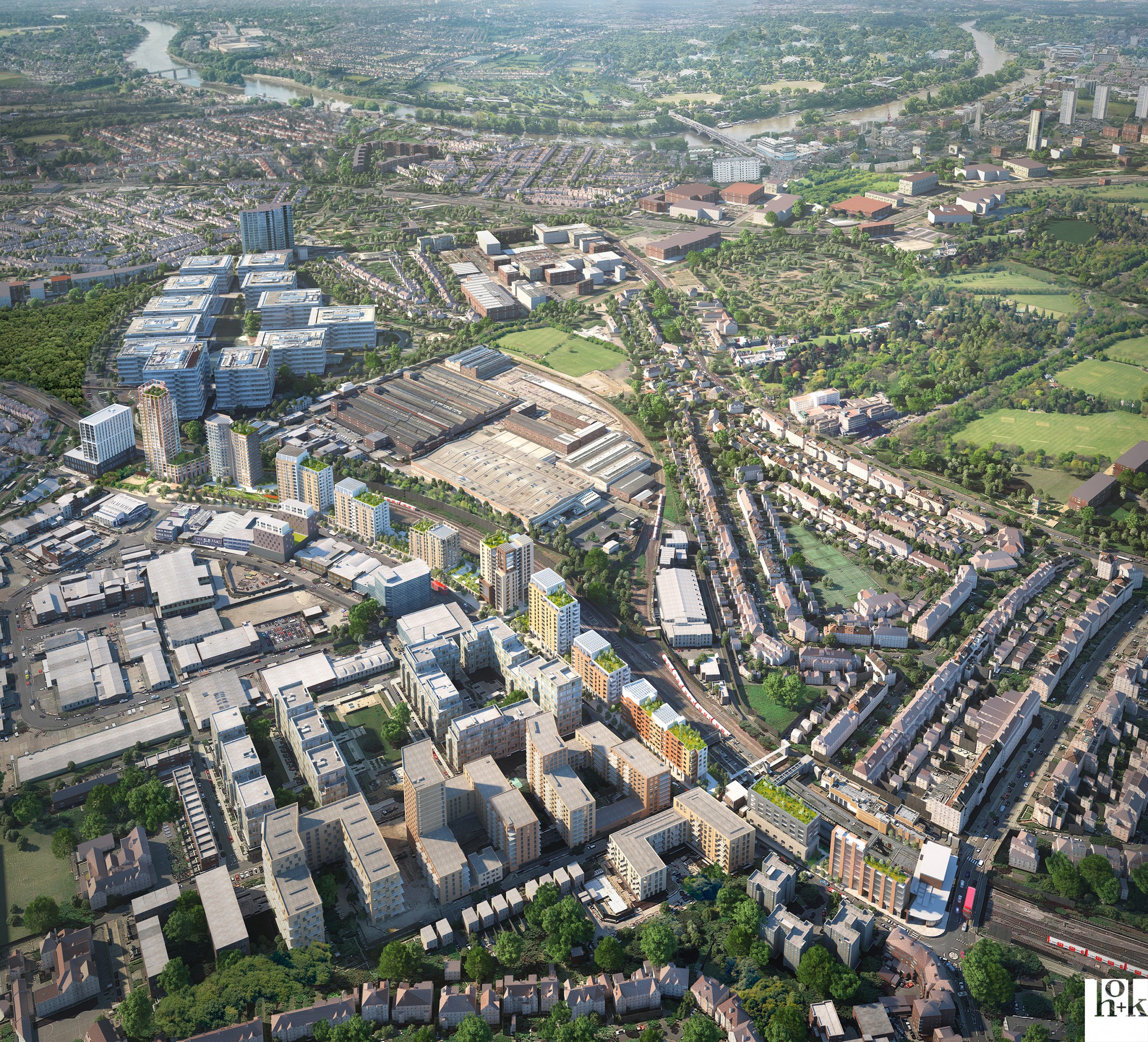
The vehicle-dominated Bollo Lane has suffered from being out of sight and inaccessible, as an adjacent railway line has disconnected it from the rest of Acton. Much of the land contains surface parking, TfL operations and car repair garages.
The design reimagines this site as a sustainable live-work community with 852 homes across nine buildings. This includes 50 percent affordable housing—an important benchmark for the London development community. Twenty percent will be family-sized homes and 10 percent will be wheelchair accessible.
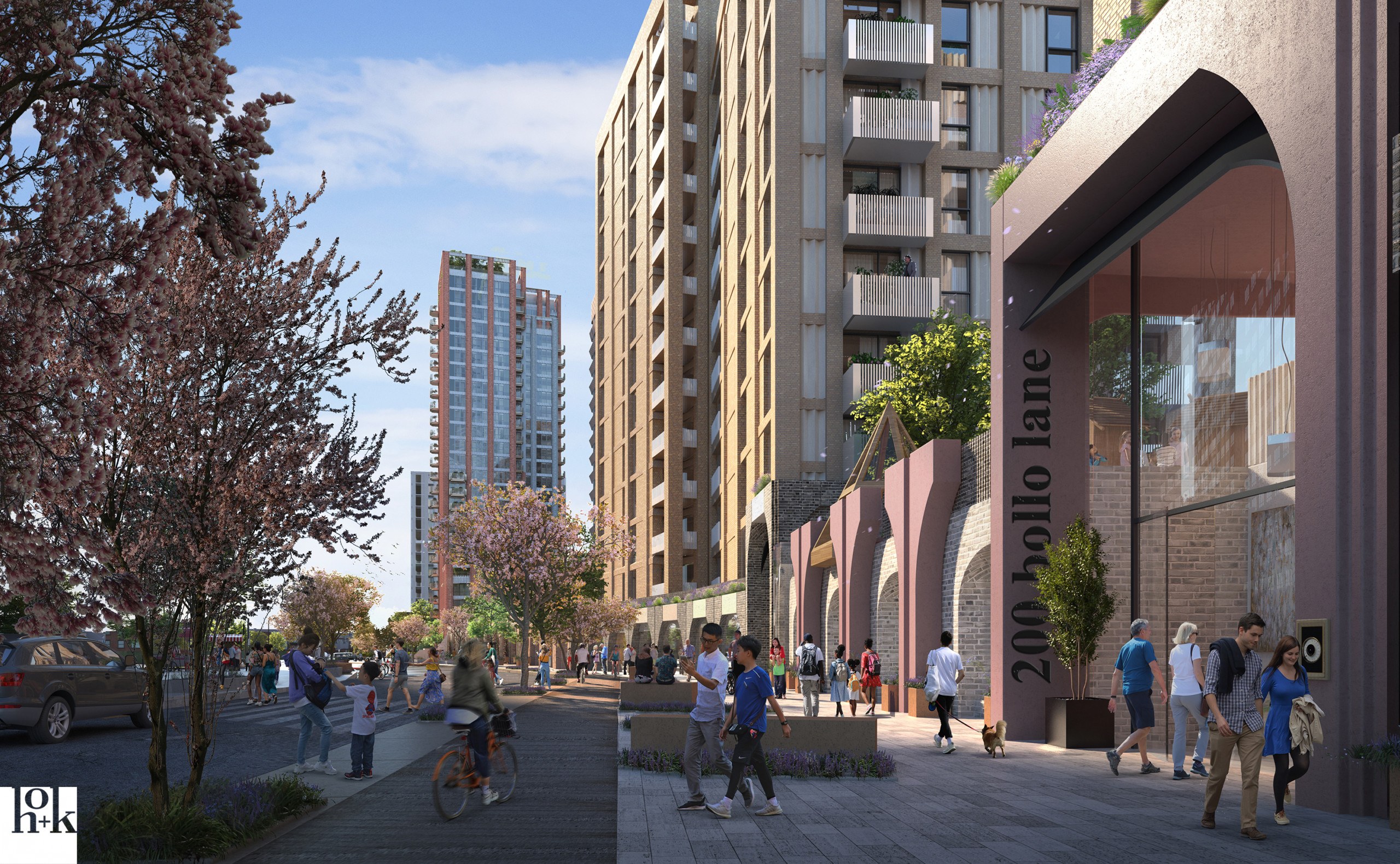
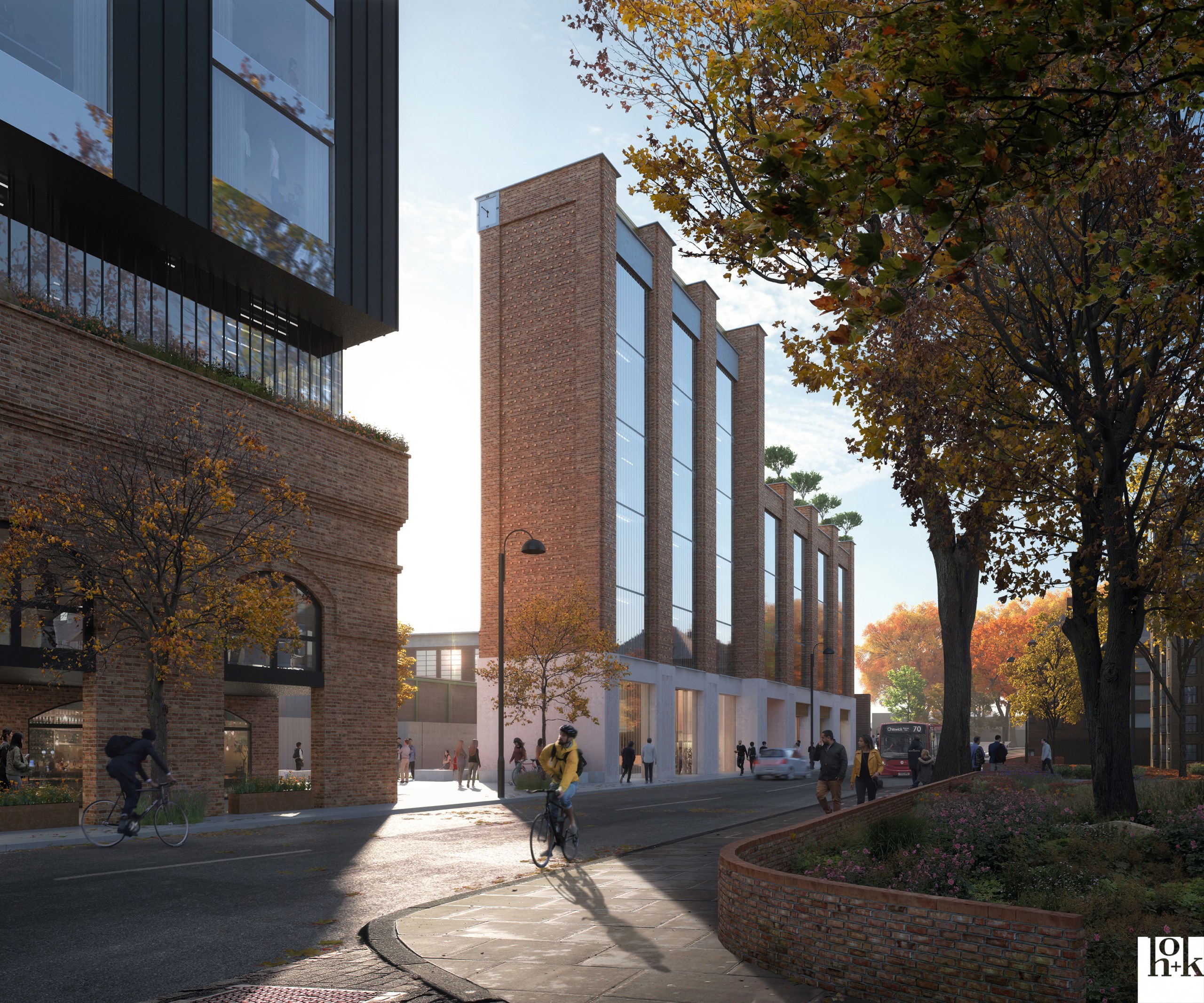
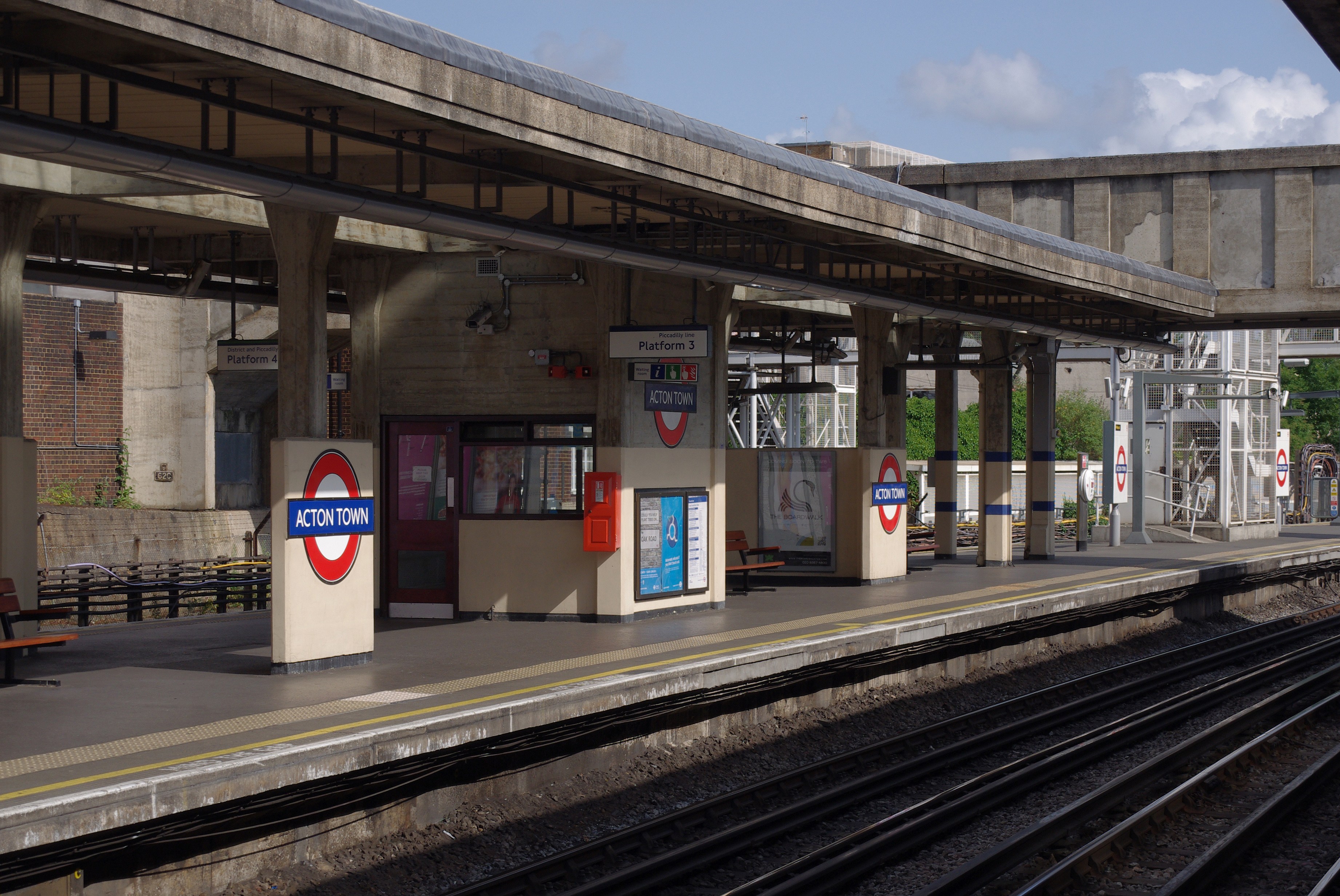
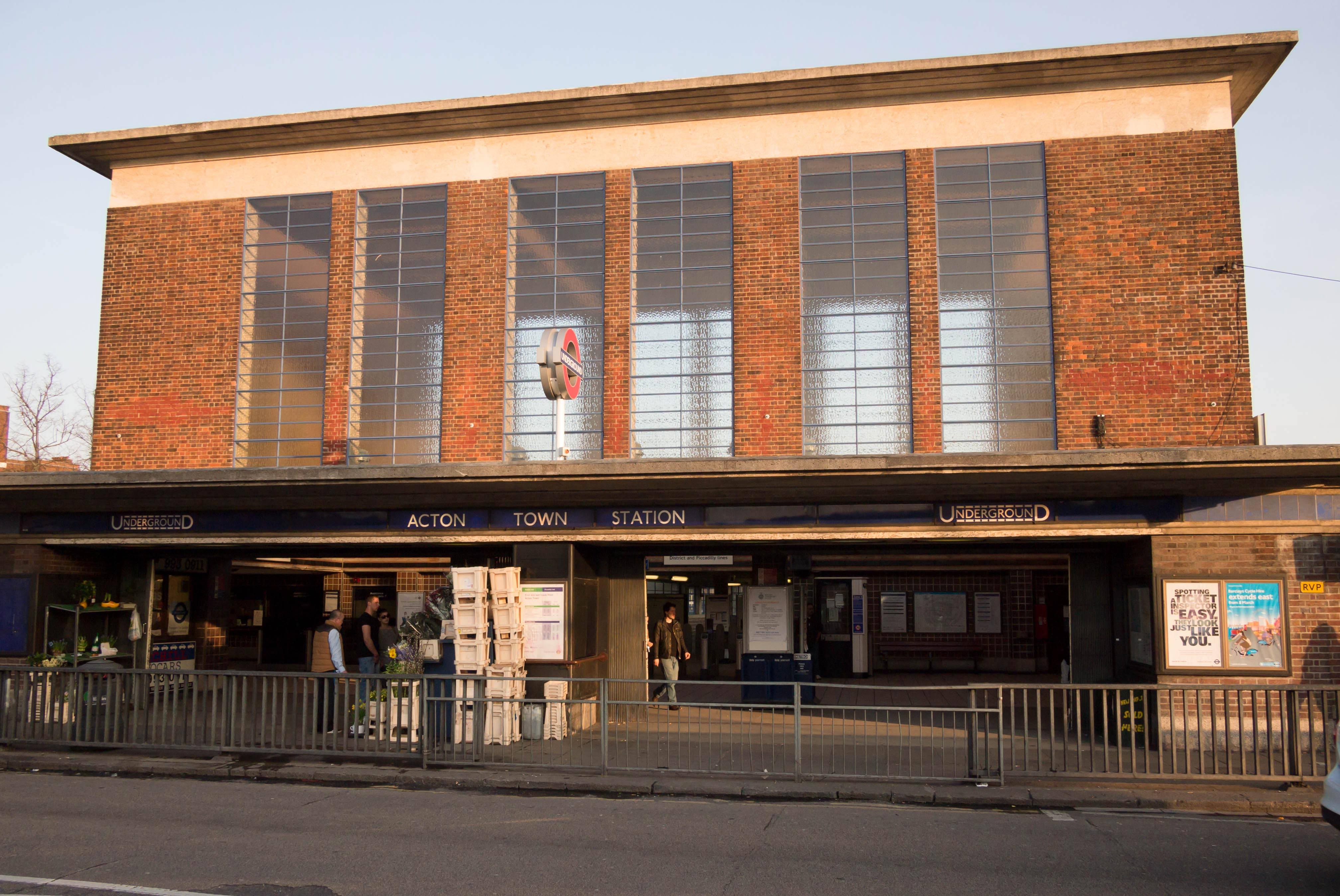
The design draws inspiration from the area’s heritage, including the Grade II-listed Acton Town Underground station.
It also reflects the commitment to design excellence of TfL, which is one of the city’s largest landowners and has helped shape modern London.
The team looked to the legacies of Frank Pick, first chief executive of London Transport, and architect Charles Holden, who together in the early-20th century developed an iconic architectural identity for the city’s transport system.
The development includes a new train crew accommodation building for Piccadilly line drivers.
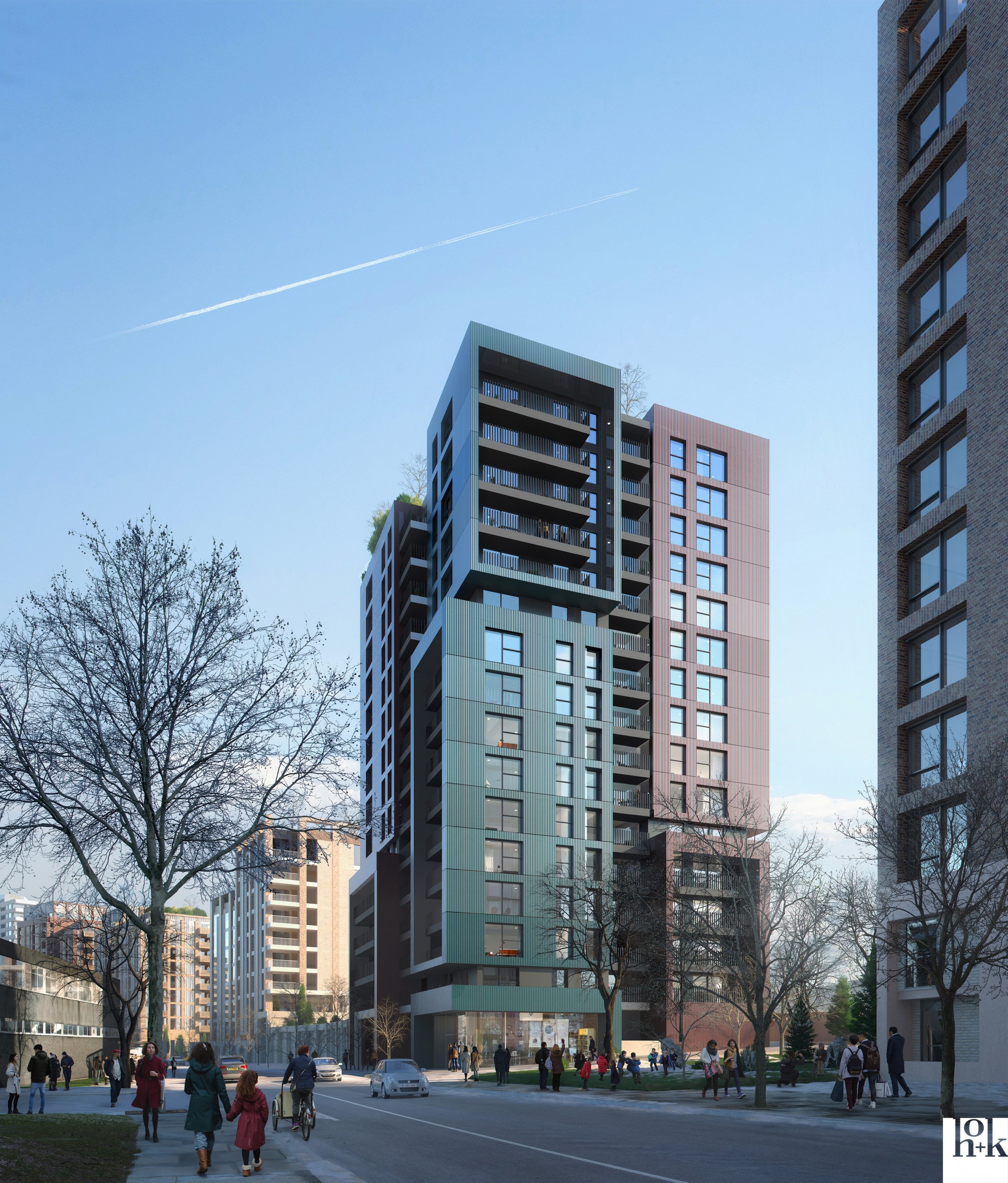
Bollo Lane will become a multi-level landscaped experience, with the buildings creating an undulating skyline of roof gardens.
To aid with legibility and wayfinding, the team designed taller buildings as focal points to the south in the center of the master plan.
At 25 stories, the mixed-use Bollo Brook House tower is highly articulated and gives people in every unit views in two directions of the adjacent Piccadilly line tracks and Chiswick Business Park.
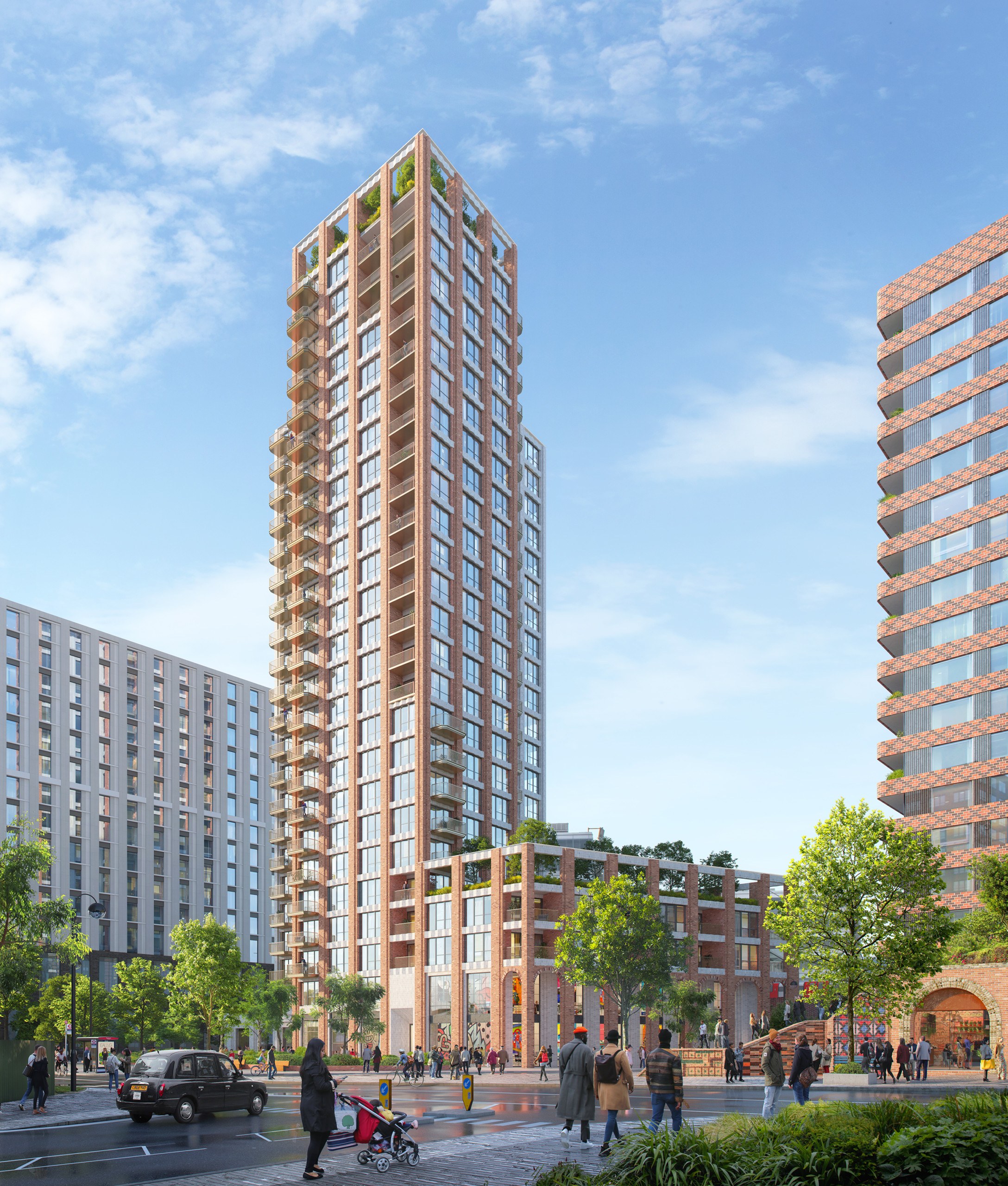
The social isolation that accompanied the coronavirus pandemic exacerbated London’s burgeoning mental health crisis.
The building design maximizes views to the outdoors and brings natural daylight into the space, resulting in a highly articulated form.
The design enhances the health and well-being of residents by providing a variety of indoor and outside spaces that work together to allow a highly social live-work community to emerge.
Planting more than 250 new trees helps transform Bollo Lane into a biodiverse urban environment.
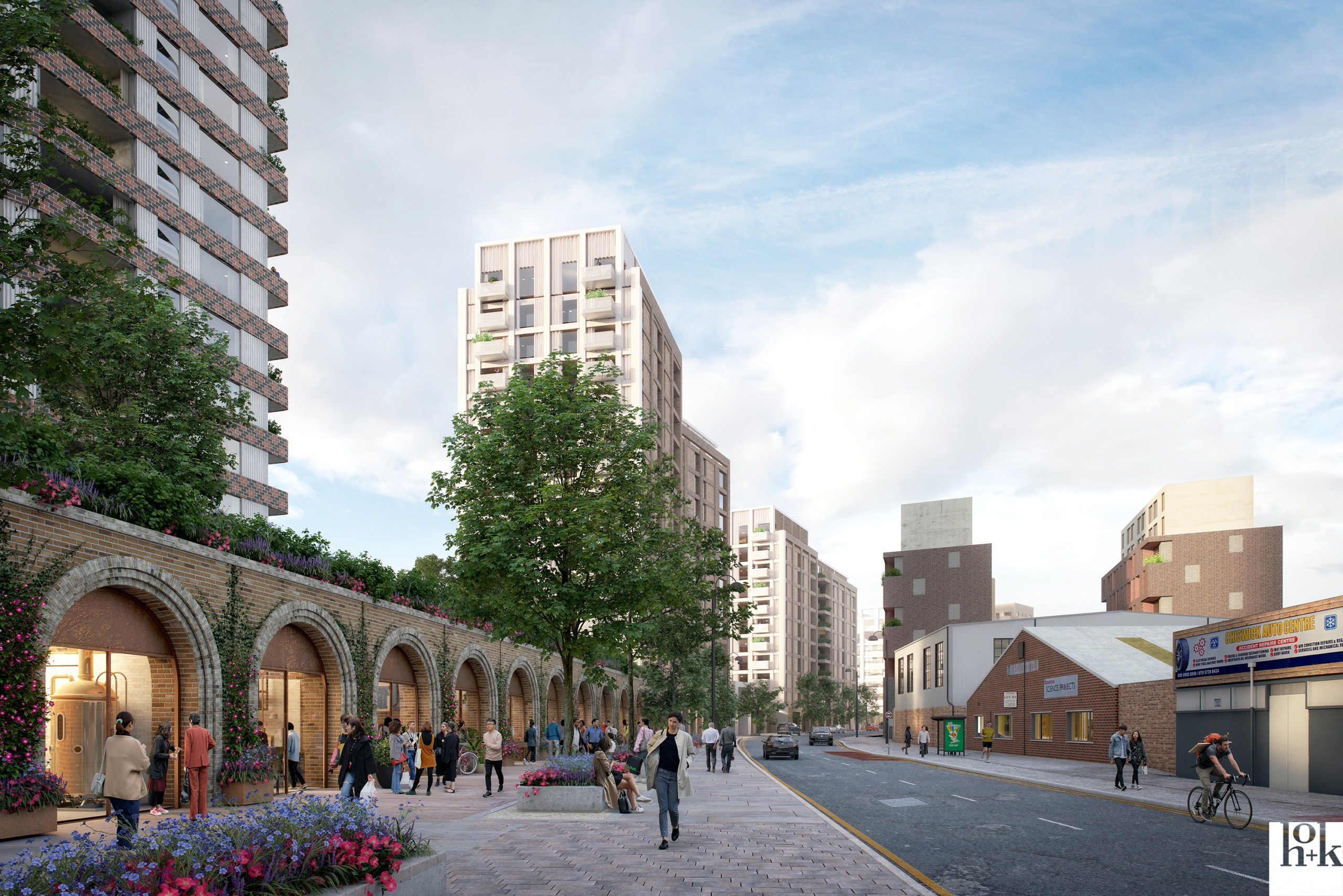
Britain’s craftspeople—its tailors, shoemakers, furniture makers, textile designers, potters and more—once were the envy of the world. Today, there aren’t enough makers. The makerspaces that do exist often are hidden away in industrial estates.
Reinforcing the area’s industrial identity, the Bollo Lane plan allocates 25,000 square feet for maker spaces across several buildings.
These spaces aim to provide a live-work community of likeminded workers who will drive economic development. Prominent shopfronts will help inspire London’s next generation of makers.
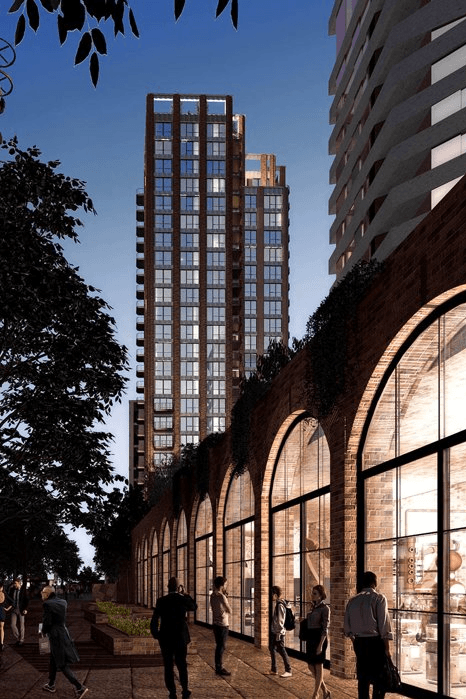
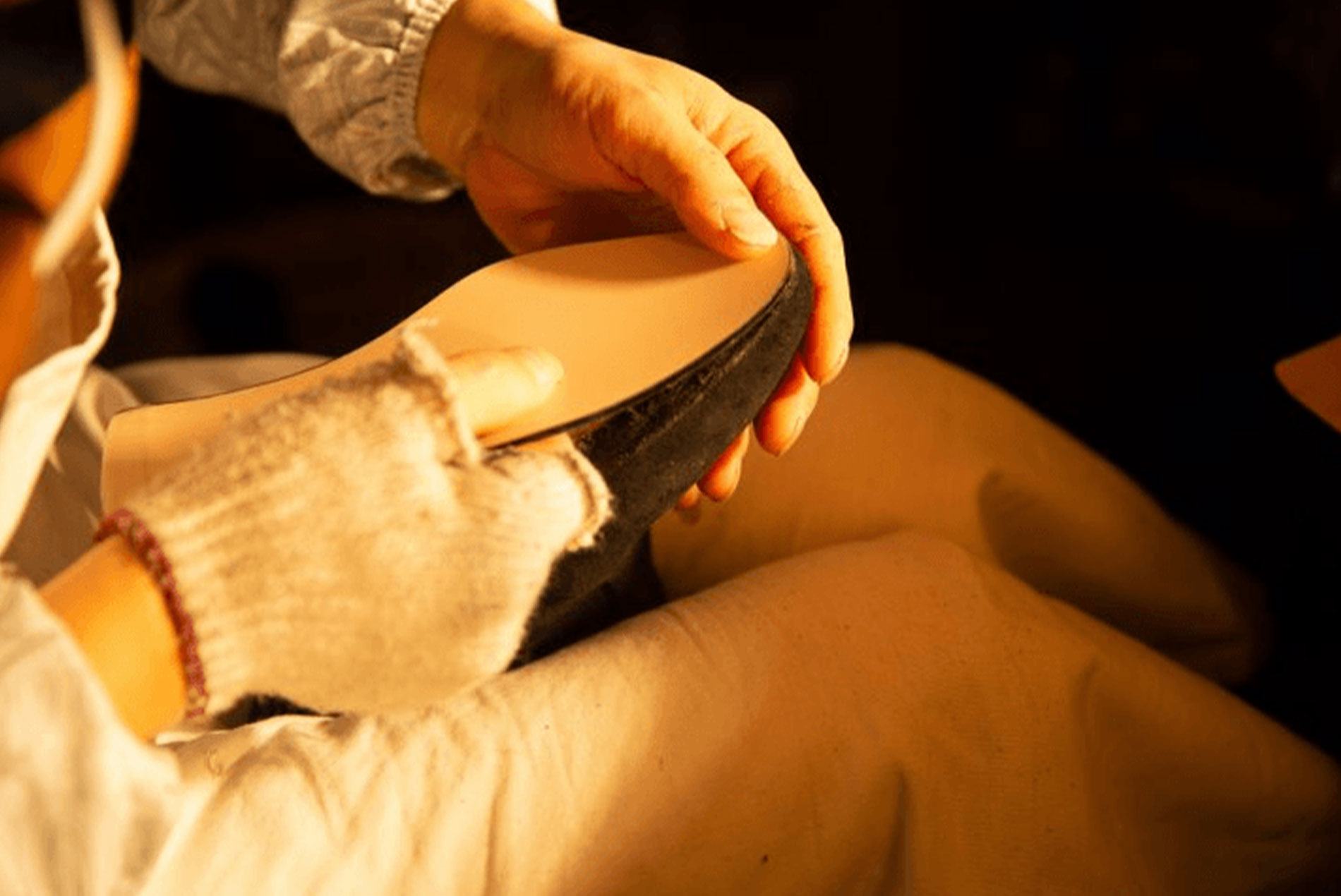
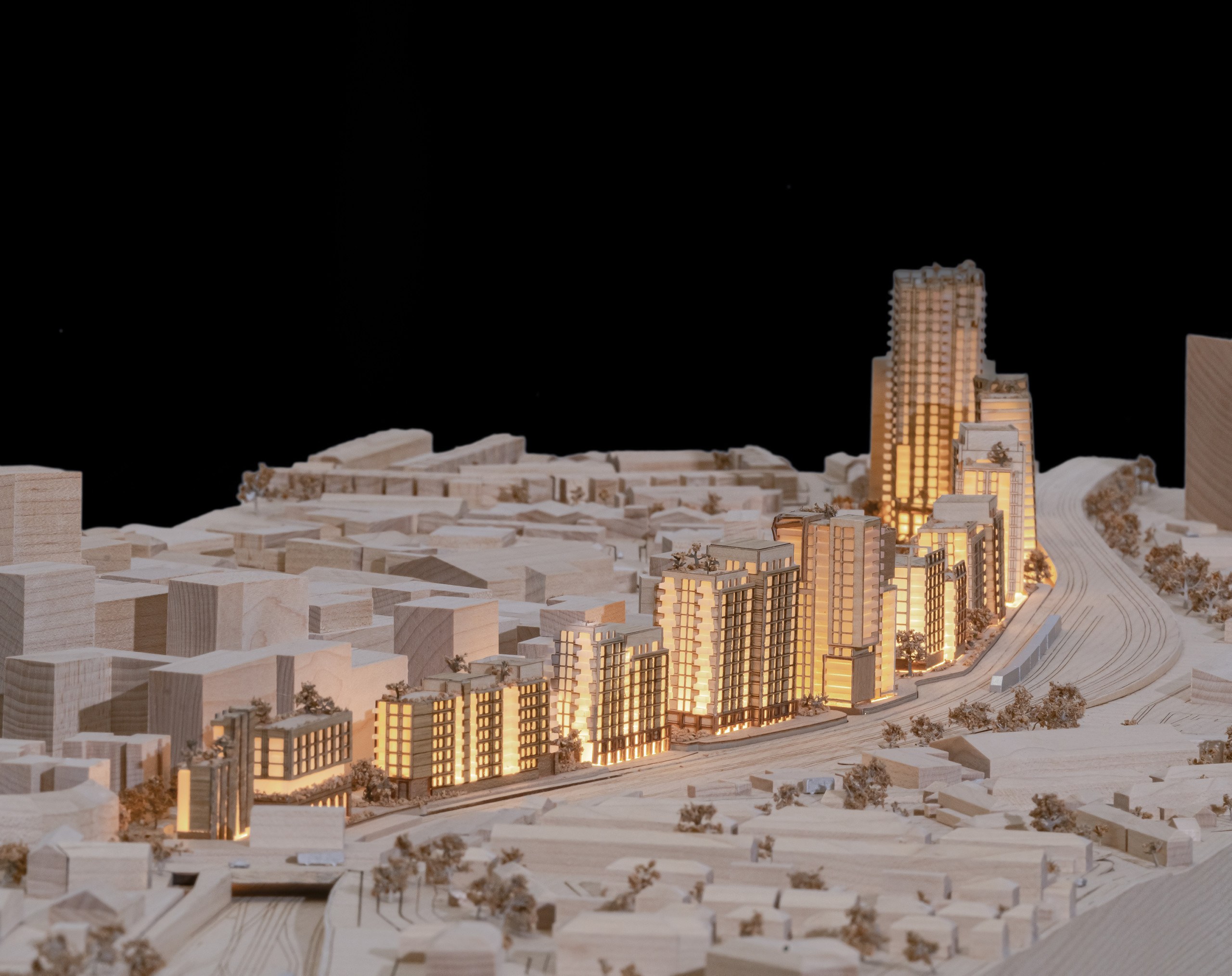
TfL is deeply invested in the long-term sustainability of the communities it builds. Environmental goals driving guiding the design include:
- Building at suitable density on a brownfield site.
- Optimizing building performance with respect to energy, carbon, water and waste.
- Contributing to TfL’sgoals for a ‘circular economy’ by retaining materials at their highest use for as long as possible before they are reused or recycled to minimize residual waste.
- Increasing the site’s biodiversity by integrating green and blue infrastructure. The orientation of green space allows for sunlight and landscapes that help with water retention and habitat growth.
- Embedding healthy streets, with a focus on creating a high-quality public realm and promoting sustainable travel.
